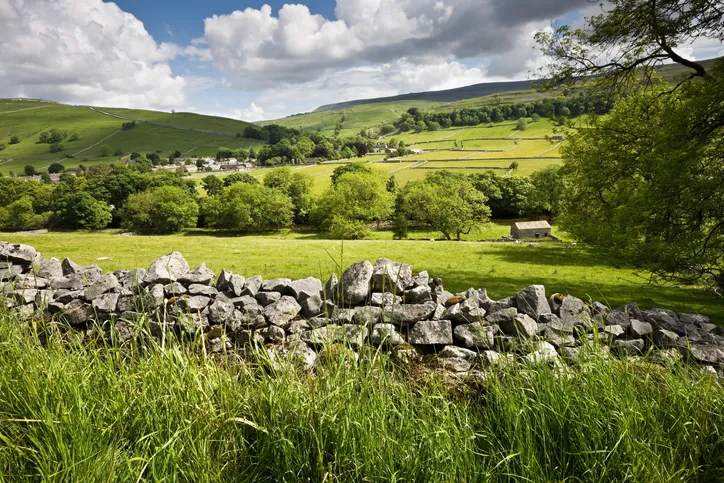Are you good at geography? If so, here’s a question for you. What do Orkney, Westmorland, Cornwall, the Cotswolds and the North Riding of Yorkshire all have in common?
Well, apart from being some of the most beautiful parts of the British Isles, they’re all famous for their drystone walls. In fact, many upland areas can boast of having hundreds of miles of these age-old boundaries, built with skill and precision without cement or mortar.

From brown sandstone in Derbyshire to granite on Dartmoor, they are not only a much-loved feature of the local landscape but also an unlikely wildlife habitat, providing a place to hibernate for frogs, toads and newts, and providing shelter to hedgehogs, field mice, wrens, pied wagtails and more.
I’m Gloucestershire born and bred, so Cotswold walls are my favourite. The handsome honey-coloured oolitic limestone has been quarried locally for generations and there are drystone walls all over our farm. They skirt the fields and line the roads that stretch across the hills to the horizon.
- "It won’t be long before it’s normal to run an entire farm from a phone." Adam Henson
- "Striving towards net zero on the farm." Adam Henson
- "Farmers have a responsibility to maintain footpaths on their land." Adam Henson
When bathed in sunlight, the stone takes on a warm, inviting glow. With many barns, cottages, manor houses and churches across the region built of the material, the Cotswolds has become a world-renowned tourist destination. Even on a crisp winter morning, the walls outside the farmhouse window are a beautiful sight. The early shafts of light reveal a coating of frost that makes the spider webs on the top stones glisten and the whole structure seems to hold back a drifting blanket of low mist in the field beyond.
“Bathed in sunlight, the stone takes on a warm, inviting glow”
It’s a timeless scene and one that would have been familiar to our ancestors since the Bronze Age. The oldest surviving drystone walls in the UK can be found at the remains of the 5,000-year-old Neolithic village of Skara Brae in Orkney.
Over the centuries, drystone walls haven’t made the news often but a recent row in the Cotswold village of Selsley hit the national headlines. When a stretch of drystone wall beside a busy road was knocked down, it was eventually replaced by a 150m-long wooden fence instead of a like-for-like repair, to the fury of Selsey residents. Gloucestershire County Council explained that the fence, paid for from the public purse, was a cheaper solution than rebuilding the wall.
The villagers insisted that it was a false economy, because wood deteriorates and will last only a matter of years. It’s a dilemma that will be familiar to every farmer and landowner who has suffered a wall collapse.
The big question is always “How much does it cost to build or repair a drystone wall?” The reply is, “How long is a piece of a string?” It depends on the height, length and depth of the wall, the type of stone, ground works and footings, labour costs and more. But it’s fair to say that walling doesn’t come cheap.
Prices vary, but three feet of wall contains something like a tonne of stone; Cotswold walling stone will set you back around £250 per tonne. Labour costs could be as much as £300 a day, so it soon adds up. But on the plus side, a job done well could last for 150 years.
There are 180,000 miles of drystone walls in the UK and it is estimated that more than 85% of them are in need of repair. So if ever there was a time to give a little love to our wonderful walls, it’s now.
